Marco Calenzo is the Executive Chef of Lido restaurant at The Surf Club. The chef, with wide expertise in Michelin-starred spots, flagship restaurants and culinary destinations within Four Seasons hotels and resorts globally, embodies authentic Italian cooking with a focus on seasonal and thoughtful preparation.
Being a native to Florence, a city synonymous with art and culture, combined with growing up in a family with a strong knowledge of produce and respect for the seasonality of ingredients, allowed him to build a passion for transmitting his country’s art through thoughtful cuisine. Chef Calenzo adds, “The great beauty of being born to a farmer’s daughter is growing up learning about local produce and its seasonality, as well as being the son of a sailor means acquiring knowledge of the sea’s bounty at a young age.”
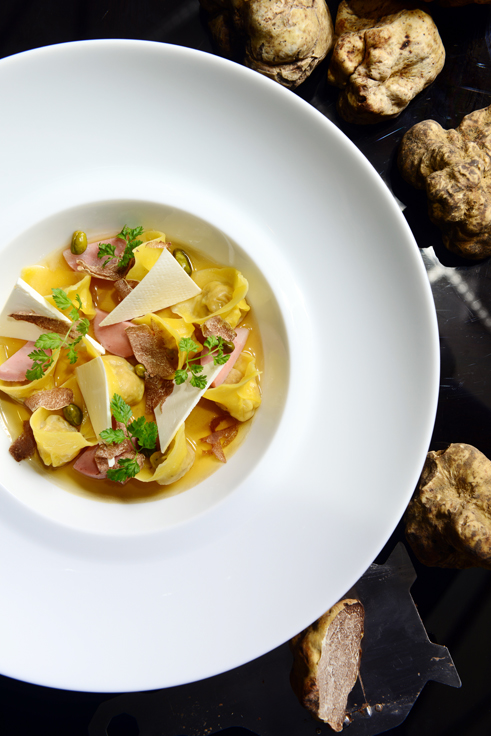
Cappone tortellini with white truffle
Gaining global knowledge at award-winning locales from Florence to London, Maui and Beijing, as well as leading flagship restaurants, Executive Chef showcases purity and respect for ingredients as he combines Italian coastal and traditional dishes with modern creativity.
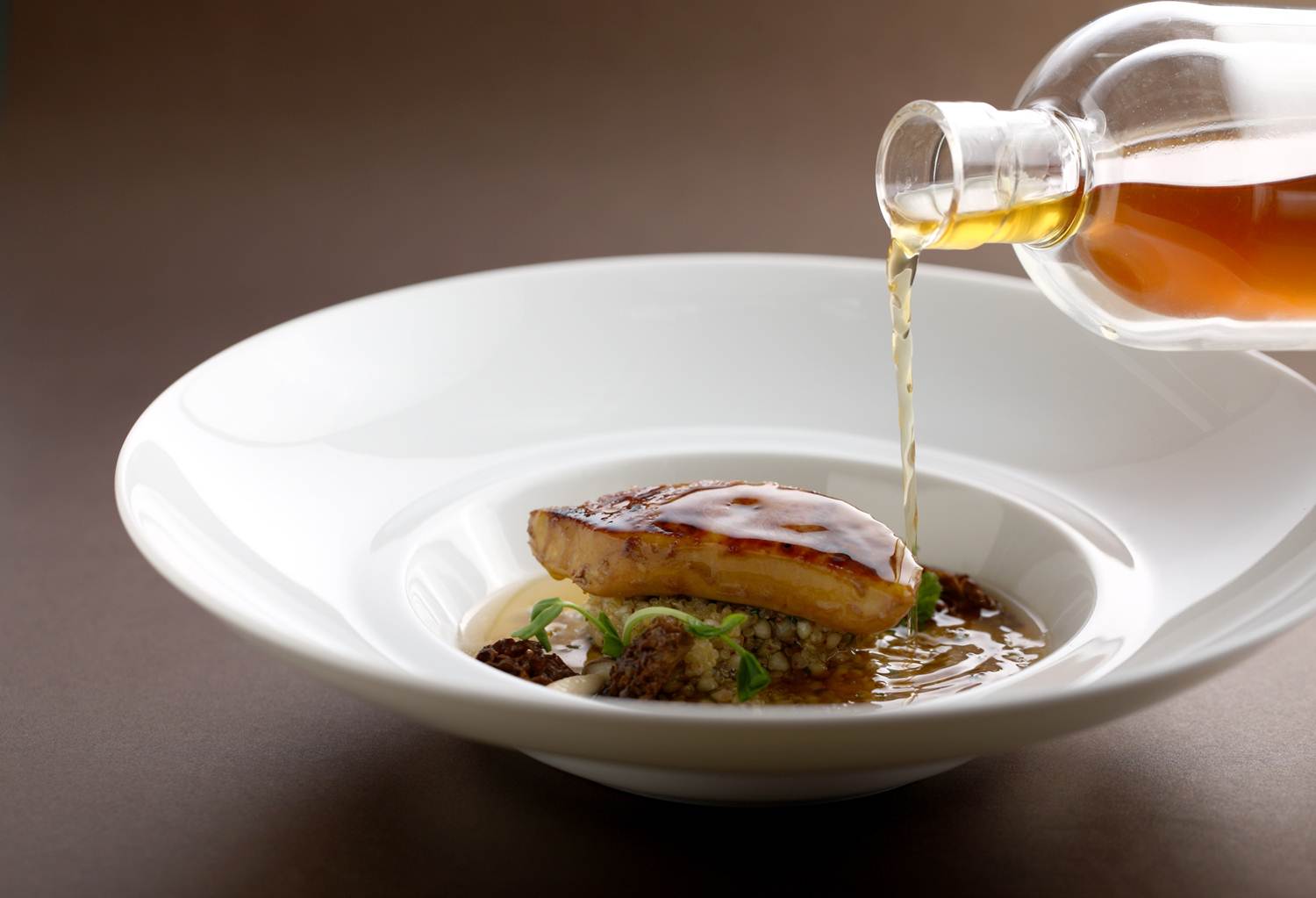
caramelized-foie-gras-grains-and-mushroom-consomme
- White and black truffle: These are some of the most sought-after ingredients in the culinary world, and they are in season during the winter months. They can be used to add a rich, earthy flavor to a variety of dishes.
- Citrus fruits: Winter is the peak season for many types of citrus fruits, including oranges, grapefruits, and lemons. These fruits are packed with vitamin C and can be used in everything from salads to desserts.
- Chestnuts: Chestnuts are a popular ingredient in many winter dishes, including stuffing and soups. They have a sweet, nutty flavor and a slightly chewy texture.
- Persimmons: Persimmons are a sweet fruit that are in season during the winter months. They can be used in a variety of dishes, including salads, desserts, and even cocktails.
- Mushrooms: Many types of mushrooms are in season during the winter months, including shiitake, oyster, and portobello mushrooms. They can be used in a variety of dishes, including soups, stews, and risottos.
- Seafood: Winter is a great time to enjoy seafood, including oysters, lobster, scallops, and crab. These ingredients are at their peak during the winter months and can be used in a variety of dishes.
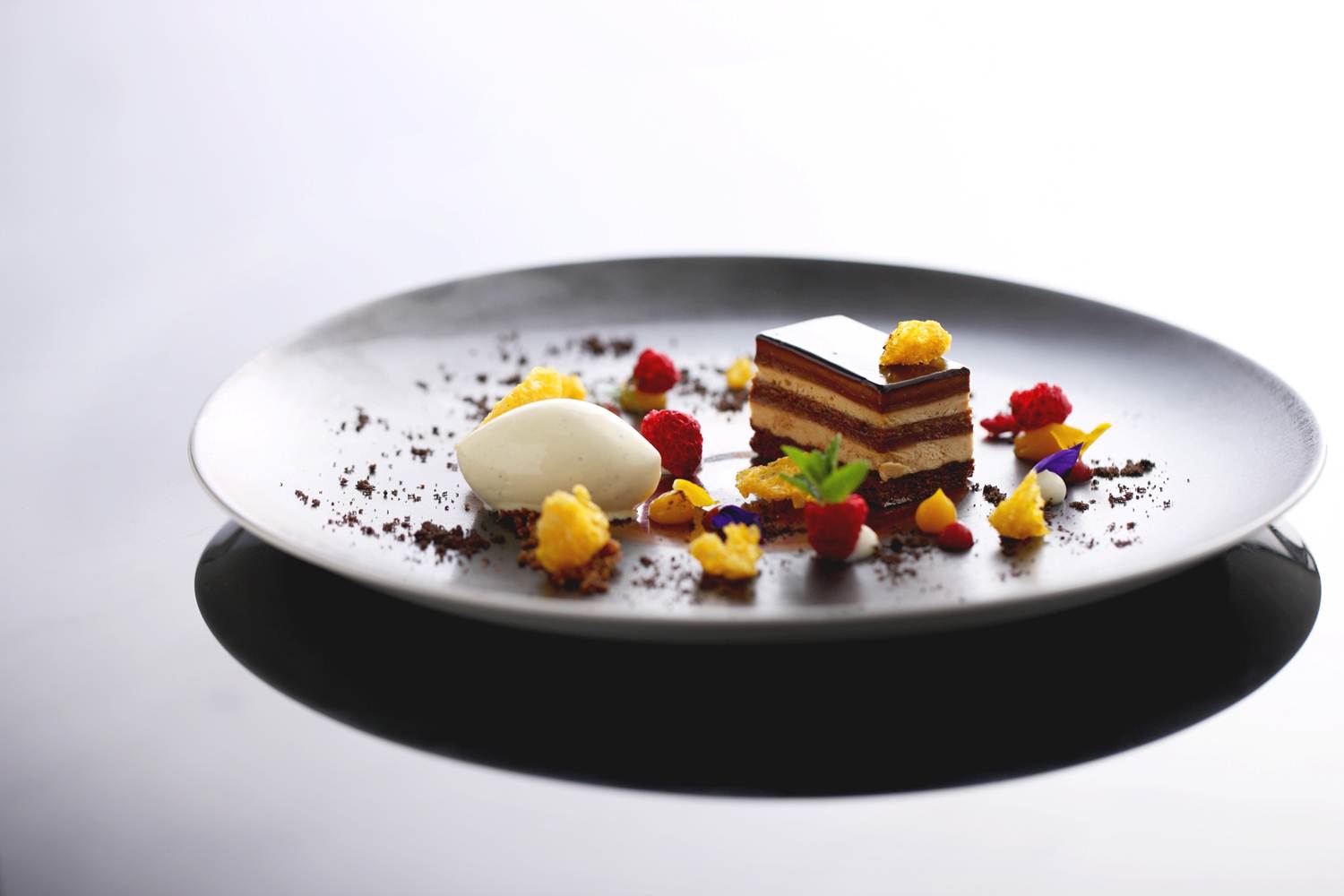
Hazelnut-and-chocolate-layer
What would you do if you weren’t a chef?
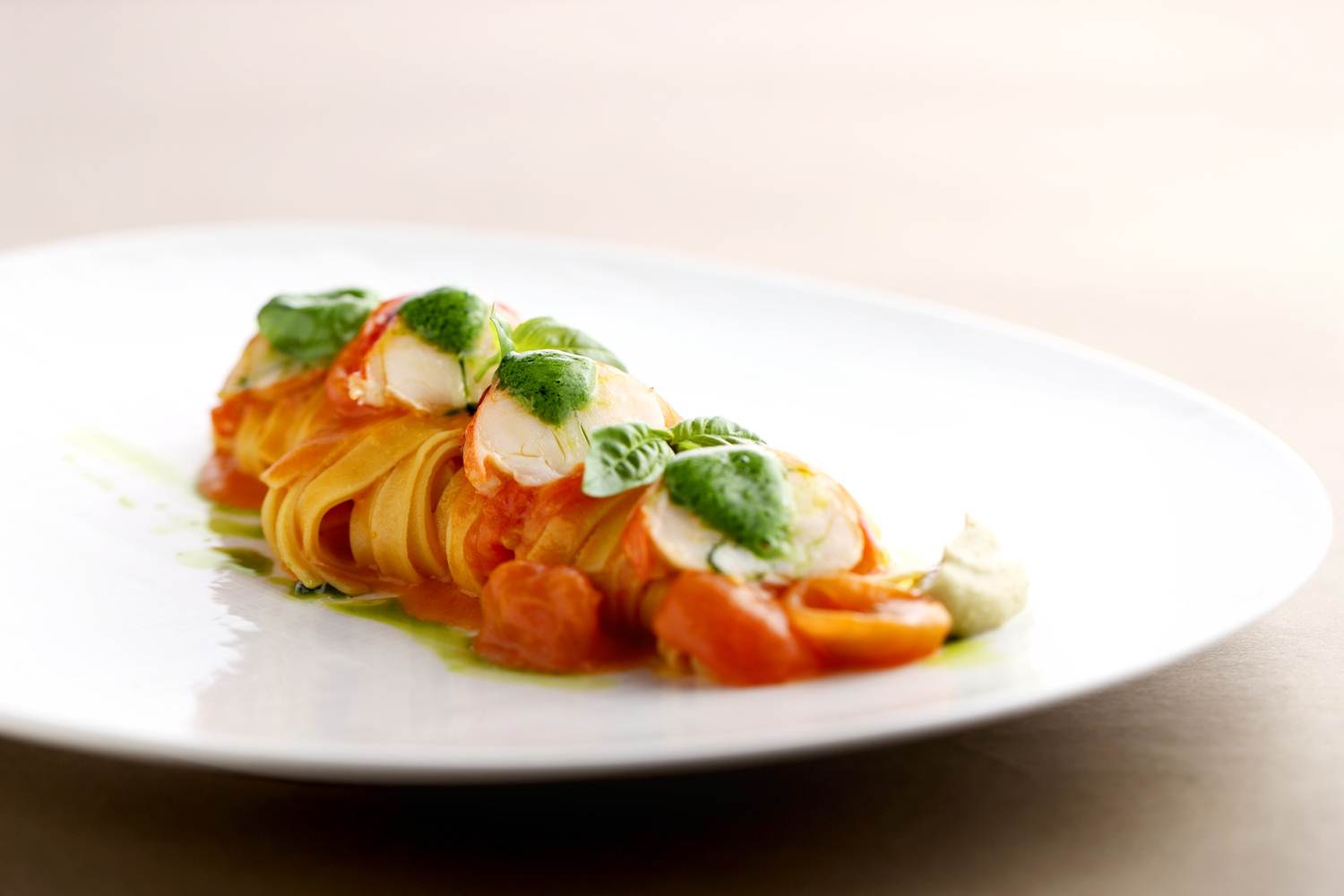
lobster-tagliatelle-with-trapanese-pesto
Do your personal preferences influence the menu at all?
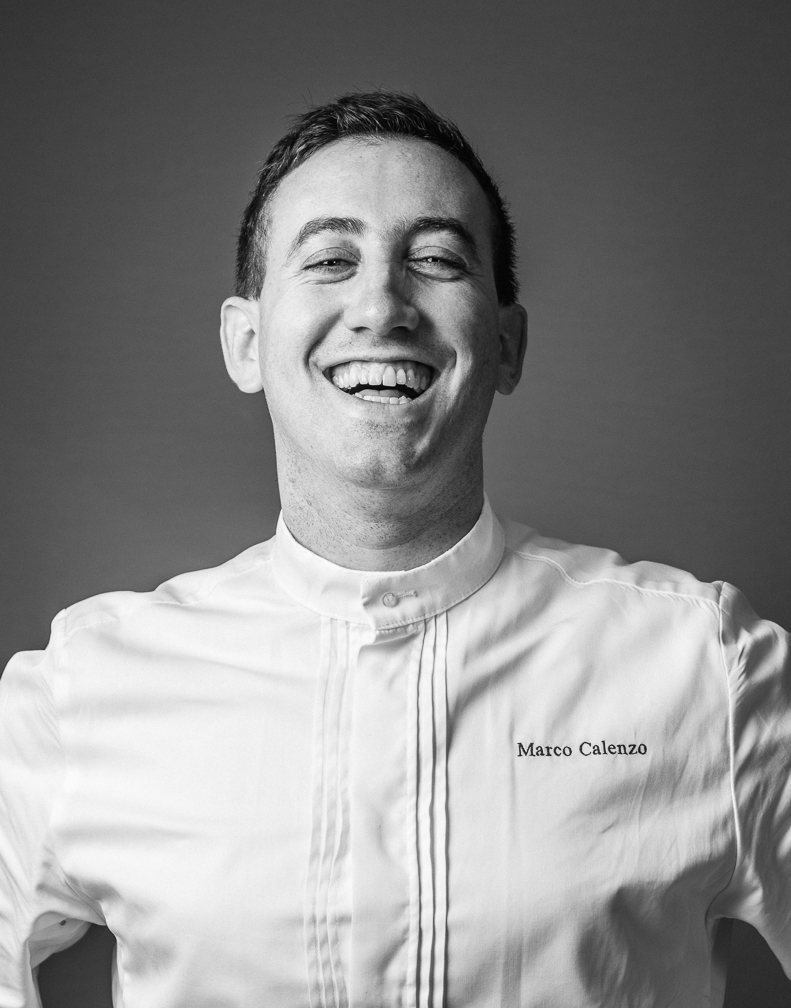
What do you think is the most over-hyped food?
There are many overrated food trends that I cannot even keep count of. Personally, I believe that there are many products that are overrated because they are continuously ordered by the majority of customers and are present in the menus of almost all restaurants, such as beef fillet, sea bass fillet, or chicken breast. I don’t mean these are bad or not good, but I think that there are more economical alternatives that, in my opinion, are better in terms of taste, organoleptic properties, and more interesting for those who have the intelligence to seek advice. As for Italian cuisine abroad, I do not appreciate cream in carbonara pasta, sautéed garlic in Bolognese sauce, and all those variations that distort and not respect the tradition of a cuisine.

In the career of a chef, my happiest moments are when the hard work done with the team is appreciated by the customers. The restaurant’s customers are the best barometer to understand the health of a kitchen. Criticisms should be like gasoline thrown on a fire. The fire within each of us must be alive and push us to do better things. I don’t believe there are any secrets, but I am convinced that every job can be continuously improved, recipes evolve, and flexibility is crucial.
When you’re not in the kitchen where can you be found?
Now that I live near the sea, you can find me fishing with my children or spending days in search of simplicity and the small pleasures of life. Having an aperitif with friends, having a coffee, getting an ice cream, or simply spending a day by the sea, admiring the horizon, mainly to relax and recharge my batteries.

Where is your favourite place to dine?
I think dining at home surrounded by the family, working every day in the hospitality industry, I am more and more appreciating the relaxed time spent at home, surrounded by family or close friends.
What’s your favourite takeaway or comfort food?
Despite having a business that dealt with Japanese izakaya take-away food, I am not a fan of delivered products. I prefer to cook something simple, even in 10 minutes, but appreciate the full freshness of something that has been prepared and eaten on the spot. My comfort food is pizza. But overall I am a huge fan of street food like Italian arrosticini (from Abruzzo Region), panino al lampredotto (from Florence), porchetta (from Ariccia, Rome) , Stigghiola or Pane ca’ meusa or arancini (from Sicily). Outside Italy, precisely in Japan, I love Takoyaki, Yakitori, Ramen, Ika or Yakisoba. I enjoy the food prepared in front of me, a warranty for the freshness.
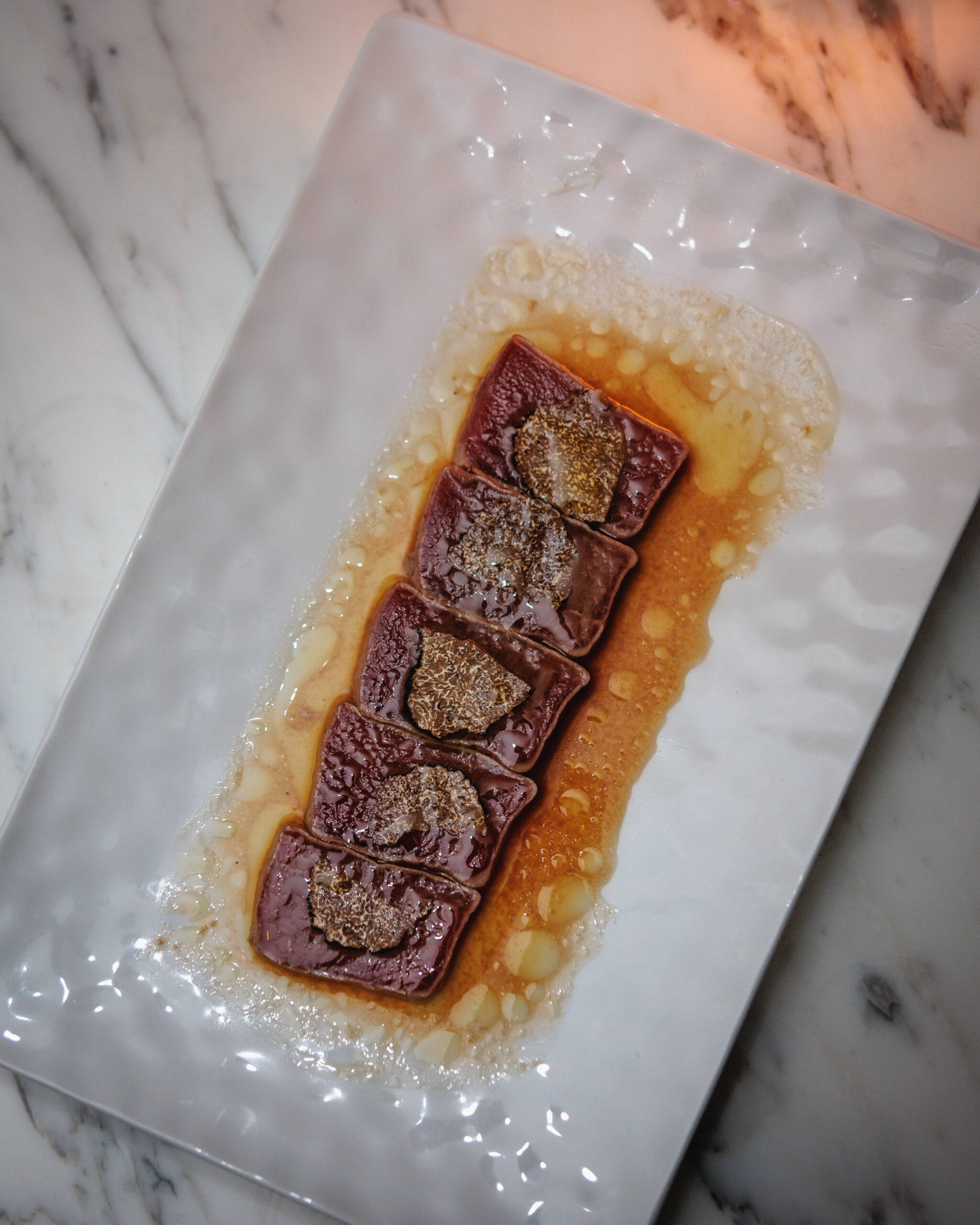
what makes the local food scene so exiting?
Which is the dish you’ve created that you are most proud of and why?
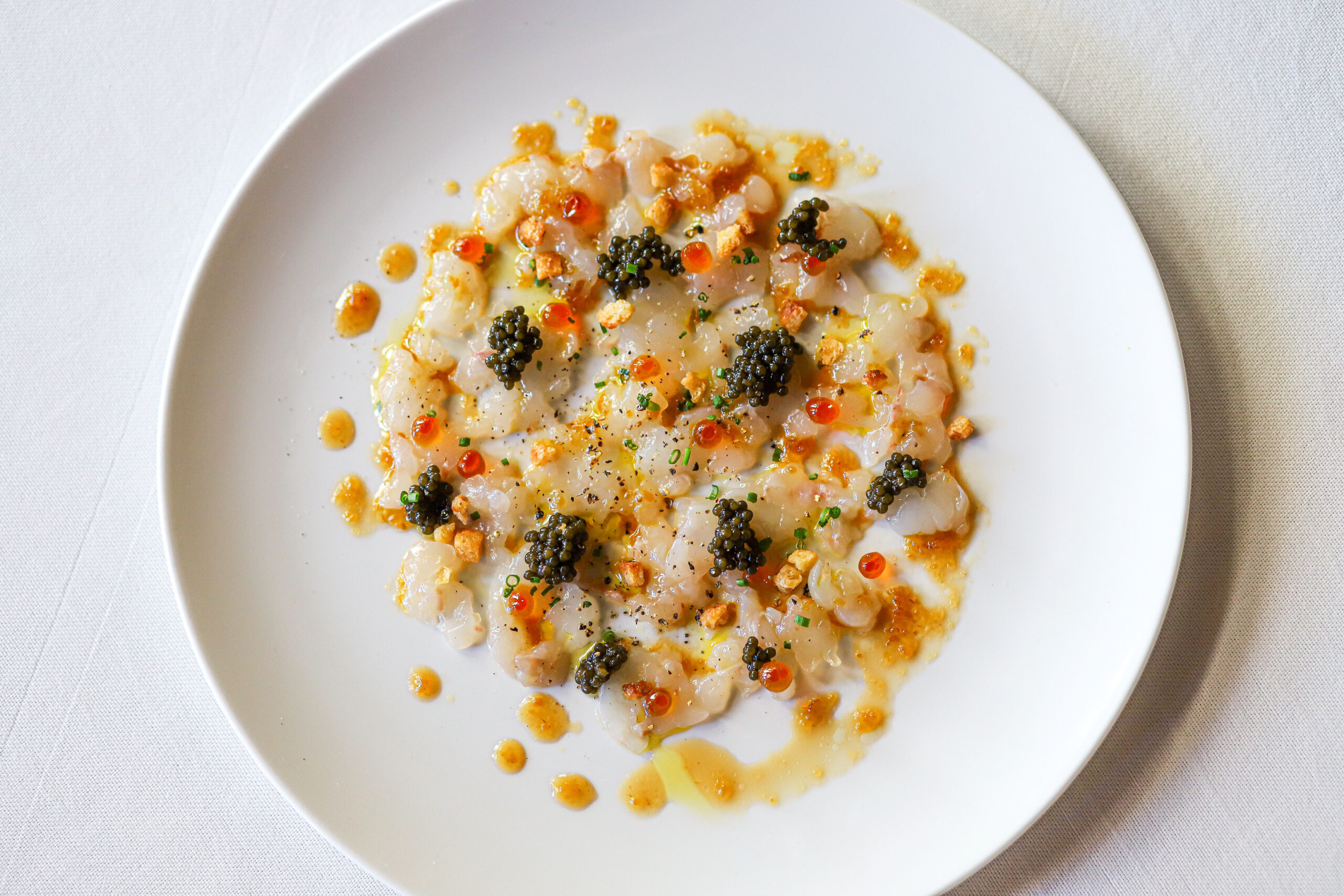
You’re having friends over for dinner tonight. What’s on the table?
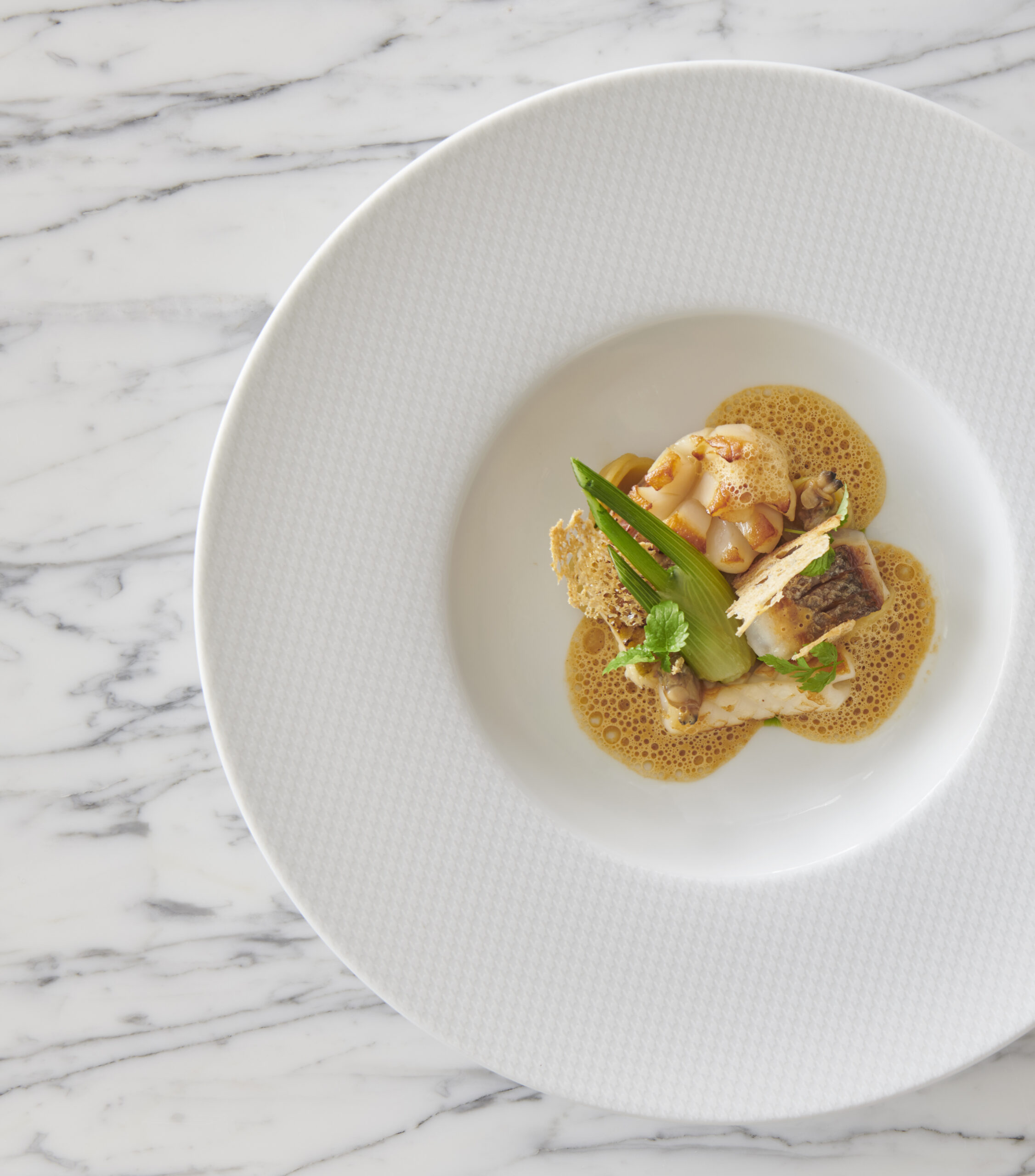
Can you tell us more about the cuisine at your restaurants?
The cuisine at Lido restaurant is Italian, with pastas and main courses that reflect the traditions of Italian cooking, with some minor variations. Lido also has a Crudo bar, with a selection of raw dishes that have Asian influences, due to my experiences in China and Japan. It’s worth noting that my wife is Japanese and I was the Executive Chef of a Japanese restaurant in London for 4 years. I believe that, similar to Italian cuisine, Japanese cuisine reflects a great respect for raw ingredients, a technique that enhances the products, a clean cuisine, almost like a Zen garden, that eliminates the superfluous and leaves you with the essence of the product.

Paris is home to some of the best restaurants and chefs in the world, with a strong attachment to tradition and a great sense of pride and collaboration among the various chefs. The city boasts a long-lasting culture and history and a great variety of cuisines. Paris is also admired around the world for its fashion and nightlife.
Risotto cooked in tomato water and rocket pesto

Tuna tartare
200 g fresh tuna
Salt
Pepper
Extra virgin olive oil
1 dash lemon juice
Fish stock
1/2 kg of fish carcasses, preferably
sole or turbot
1lt 1/2 Water
100 g Celery
100 g Carrot
100 g Onion
2 tomatoes
1 sprig parsley
2 cloves garlic
Rocket sauce
300 gr Rocket
5 dl milk
20 dl Fund fish
40 g Potatoes
Extra virgin olive oil
Salt
Pepper
Chicken stock
500 grams of chicken offal
100 g Onion
50 g Carrots
50 gr Celery
50 g Mushrooms
150 ml white wine
Leaves 2 bay leaves
3 sprigs rosemary
30 Pepe beans
1.5 liters Water
Extra virgin olive oil
Tomato consomme’
500 g Chicken
2 kg tomatoes
2 Albums
1 liter of chicken broth
Risotto
300 gr Rice
20 gr Butter
50 ml white wine
30 g Parmigiano Reggiano
Seal the plate
Chips, cheese
Processing
The tartare: Cut the tuna into small cubes and season with salt, pepper, olive oil extra virgin and a splash of lemon.
Fish stock: Sauté in a pan vegetables previously cut diced with garlic, parsley and olive oil extra virgin. Join the carcasses, sprinkle with white wine and let it evaporate. Add 1 and a half liters of water and bring to boil. Allow to simmer for half an hour and filtered.
The rocket sauce: Blanch the arugula washed in 5 ml of milk. Smash it in a blender with bottom fish and potatoes previously
cooked. Correct the taste with 2 tablespoons of olive oil extra virgin, salt and a little ‘pepper. Pass through a sieve and smash it again.
Chicken stock: Dice the chicken giblets and brown slowly in a pan with olive oil extra virgin, but without giving color. Add the onion, celery, carrots, mushrooms and continue to cook over low heat. Sprinkle with white wine, let it evaporate, coat the vegetables and offal with water and bring to a boil. Add the bay leaves, rosemary, peppercorns and boil for 1 hour.
Remove the fat and foam that forms in surface during cooking, so as to obtain a a light background. Strain the broth with a clean cloth.
The tomato consommé: Whisk the chicken with tomatoes and egg yolk. Pour the chicken broth, mix thoroughly and
bring to a boil. Remove the foam that forms as well to obtain a clear background.
The risotto: Toast the rice in a pan with a knob of butter, sprinkle with white wine and let evaporate. Gradually add the consommé tomato heat, stirring constantly. When the rice is cooked al dente, stir in the Parmigiano Reggiano cheese.
Stir and finish cooking, adding salt, if necessary.
Preparation of the dish
Spread on a flat strip of sauce rocket, lay the center of the risotto and garnish with tuna tartare with pecorino cheese and chips.


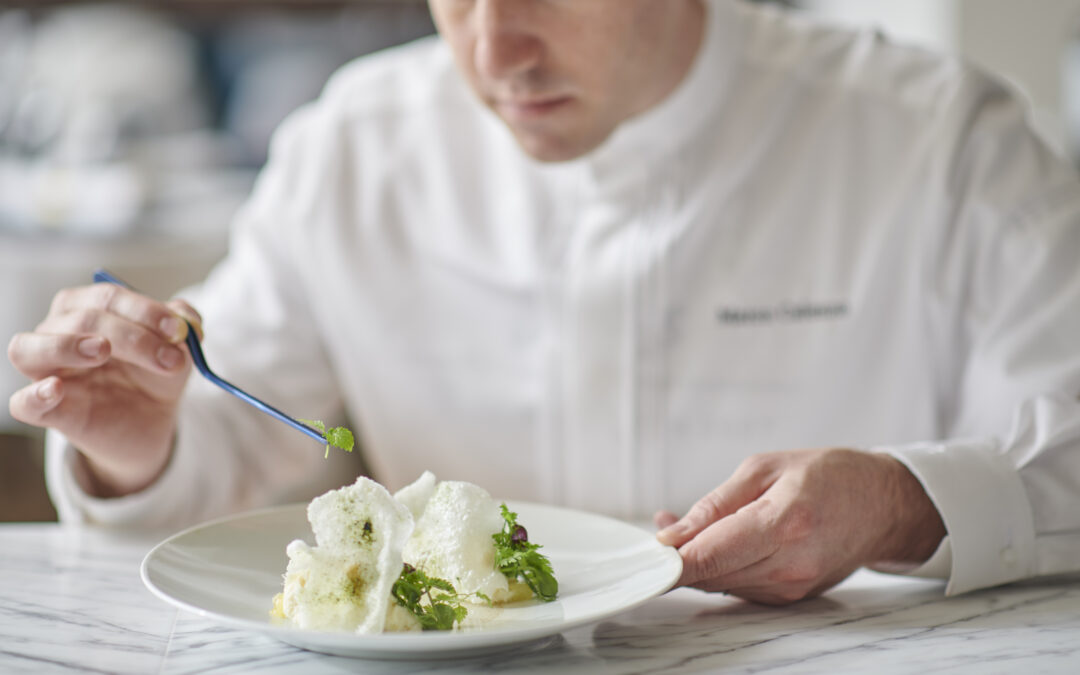


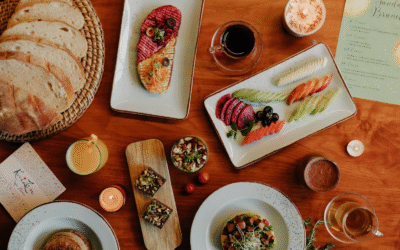

Keep up the good work!
Nice and professional review, congratulatioms.